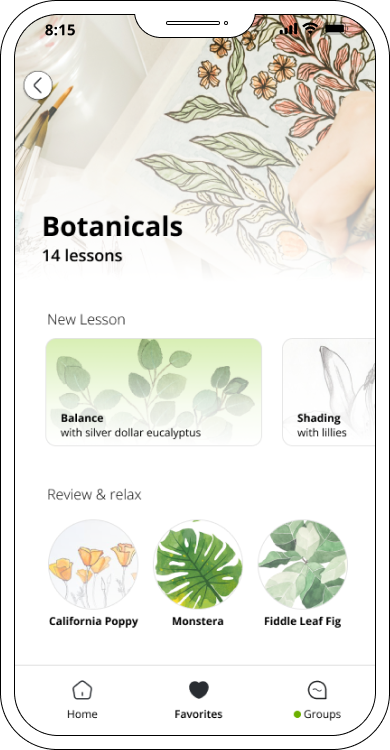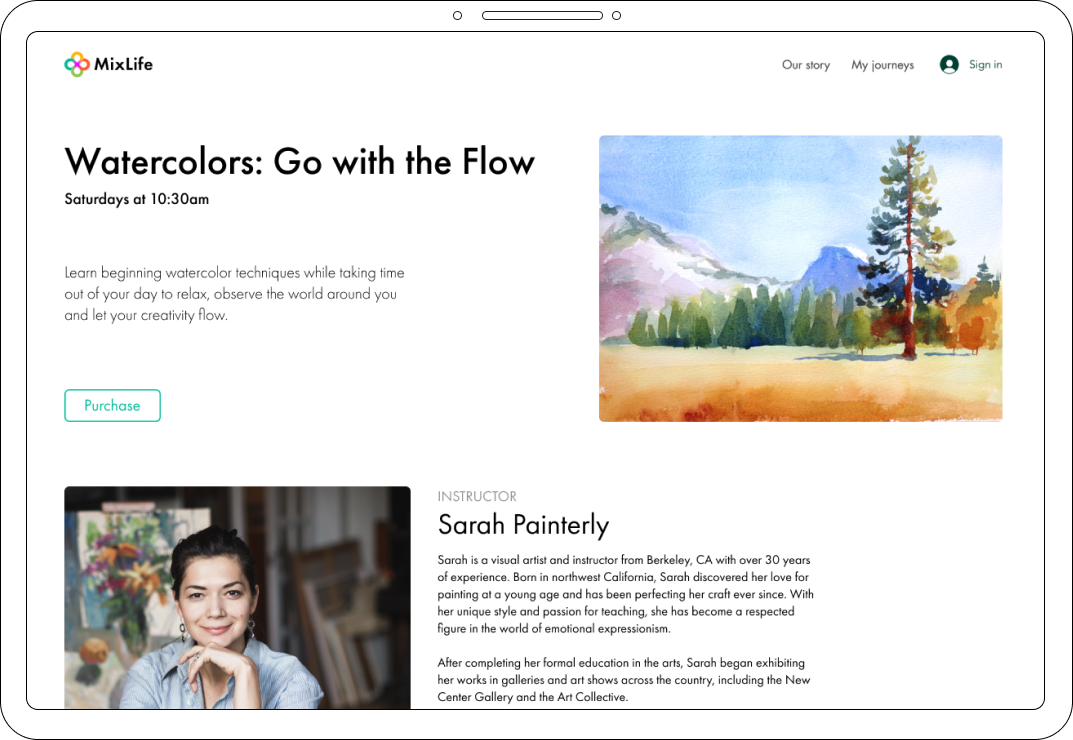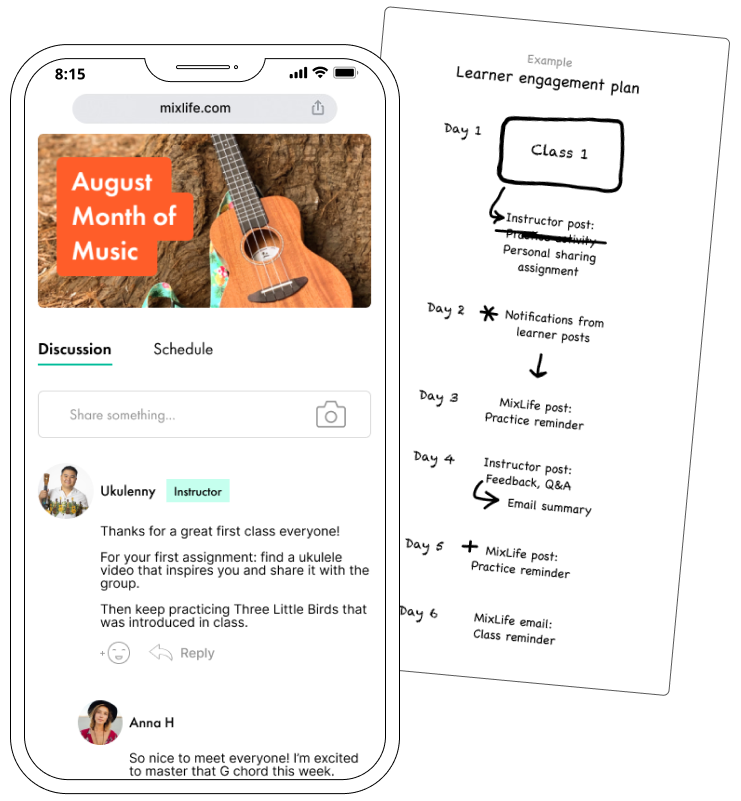MixLife
Creative Course Platform
January - August 2021


Role:
Co-founder // Lead designer & researcher
Team:
CEO, Mental health advisors
As co-founders of MixLife, the CEO and I were exploring new directions in search of product market fit. I led the design process to develop a new product strategy.
We improved mental health outcomes, delivered an experience customers loved and generated company value.
As society suffers from increasing anxiety and depression, decades of research shows that creative arts improve mental health.
User-centered challenge:
Design a creative learning program that is easy and beneficial to mental health
Business challenge:
Offer effective programs at an affordable price point with sustainable margins

We started with our CEO’s personal experience using dance classes to speed her recovery from PTSD, and sought out more perspectives.
We wondered: does our potential audience see value in creative activities? How might it fit into their lives & existing practices? Would instructors be open to mental health goals?
In a semi-structured foundational interviews, we heard from:


To synthesize the flood of research insights into distinct testable concepts, I facilitated a strategic process based on Google design sprints.
I organized our insights into instructor personas, some user profile outlines, and a concept map visualizing the landscape from art classes to wellness retreats to mental health treatment.
We then walked through our map, broadly brainstorming product & service concepts for each market.
We evaluated the product ideas through a checklist based on desirability, viability and feasibility, using intuition where data was lacking.
Out of many ideas, we landed on two top concepts to prototype.
Learn creative skills in relaxing, bite-sized lessons, organized into clear learning paths.
Target user:
Stressed out young professionals with creative interests, familiar with learning online. Meditation apps may not work for them
Hypothesis:
Make it incredibly easy to fit creativity into daily life for wellbeing breaks

Results?
We heard “It’s hard to find the time”.
This was corroborated by the high drop-off rates for similar learning and meditation apps. Participants also didn’t see increased value over free video competitors.
We decided not to pursue this concept.

Combine a traditional arts course with an online platform that facilitates practice and feedback.

Target user:
Adults who want to explore a creative hobby outside of work and are open to meeting others
Hypothesis:
Amplify the sense of community found in traditional art classes with online interactions throughout the week

Results?
We heard “This would help me set aside time to do things I enjoy.”
Potential customers were also familiar with purchasing creative classes and had ideas about fitting this into busy schedules. Also, meaningful social connections are one of the best ways to improve mental health and maintain engagement.
We decided to move forward with an MVP.
We had a promising format, but was it a valuable product and viable business?

To answer this, I designed and built a code-less MVP web app so we could rapidly iterate on our course model. We hired instructors and started running courses.
Our iterations focused on questions of execution that could make or break the user experience or business model: how can we help learners stay engaged and feel like they belong? Are courses 4 or 6 weeks? How might we reduce the time instructors spend providing feedback?
Fulfilling our commitment to mental health outcomes
A guiding value was to provide research-based mental health solutions, steering clear of vague “wellness” claims. We regularly consulted with mental health experts on our methods. I designed an instructor training that operationalized their advice.
I also collaborated with the director of the Stress Measurement Network at UCSF to formally measure our impact in a clinical trial pilot.
This has been really great…it helps me renew myself. Work has been very busy and this has been one of the things I’ve been looking forward to and helps me recharge….It’s been amazing for me….you have the winning formula here!
-RP, MixLife customer
It helps me renew myself… It’s been amazing for me… you have the winning formula here!
-RP, MixLife customer
reported improvements in overall wellbeing
Clinical trials pilot results
75% reported reduction in perceived stress
75% reported increases in feelings of belonging to a community

Net promoter score

course revenue growth
As compared to previous MVP
We raised pre-seed funding!
Less than 2% of venture capital goes to female founders.

I’ve launched a global app, built a startup from scratch and consulted for organizations in between. I’m looking for my next big project.
What are you working on?